#Mountain View Egypt
Text
#Mountain View Chillout Park 6 October#Chillout Park Compound By Mountain View#Chillout park for sale#Chillout park map#Chillout park prices#Mountain View#Mountain View Chillout Park brochure#Mountain View Chillout Park location#Mountain View Chillout Park master Plan#Mountain View Chillout Park pdf#Mountain View Development#Mountain View Egypt#Mountain View Egypt Company#Mountain View Real Estate Development#MV Park
1 note
·
View note
Text
#Chillout Park Compound By Mountain View#Mountain View Real Estate Development Mountain View Chillout park compound#Mountain View Chillout park compound#Chillout Park#Chillout park for sale#Chillout park map#Chillout park prices#Mountain View#Mountain View Chillout Park brochure#Mountain View Chillout Park location#Mountain View Chillout Park master Plan#Mountain View Chillout Park pdf#Mountain View Development#Mountain View Egypt#Mountain View Egypt Company#Mountain View Real Estate Development#MV Park
1 note
·
View note
Text
fish scale mountain,

1 note
·
View note
Text
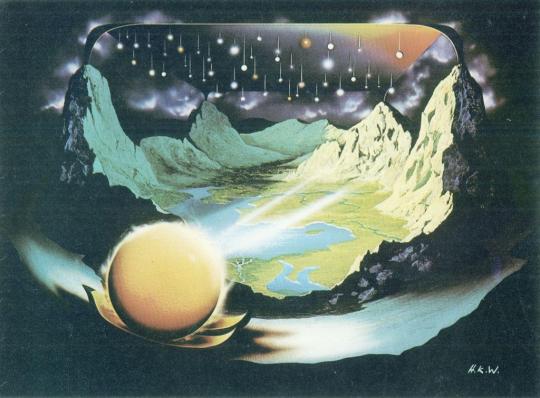
Unknown (HKW)
Modern artists' conceptions of one Egyptian view of the universe: a) flat earth comprised of Nile Valley and surrounding land, Red Sea, Levant, Cyprus, Asia Minor and Greece, surrounded by mountain ranges with four tall peaks supporting four corners of canopy of sky, from which hang suspended stars; in foreground, golden disk of sun on two reed floats sailing along waters of Netherworld; b) slightly different view of same concept.
The ancient Egyptians held two primary views concerning the structure of the universe; two images which would seem to us mutually exclusive but which were valid as expressions of different aspects of one situation. In one case the sky was a female goddess, separated from the earth god Geb, bending over the earth, supported by the air god Shu. Each morning she gave birth to the sun and swallowed the stars, each evening she bore the stars and swallowed the sun. At other times, heaven became the Divine Cow, her belly studded with stars, the sun in its bark sailing along her body. At other times, the Egyptian view of the universe resembled that depicted here.
"The Egyptians believed that the universe was four-sided, with Egypt itself in the center. Egypt lay in the middle of a flat plain surrounded by enormously high mountains, with four higher mountain peaks at the four corners to indicate the cardinal points, and also to hold up the dome of the heavens. The sky was, to their minds, an iron ceiling over the universe, containing holes through which at night obliging gods let down the lamps of the sky - the stars - on cables, for the sole purpose of furnishing beauty and illumination for Egypt. In the morning these same gods pulled up the lamps, economically enough, and then the great God Ra, the Sun, started on his daily journey around the ramparts of the world, riding in his Nile chariot on the celestial river which flowed along the base of the mountain range and in which the Nile was believed to have its source.
."The Egyptians believed sometimes that this boat in which the Sun-god sailed was a magic bark which navigated without hands or brain to steer it. At other times it was like one of the regular Nile boats, fully manned and equipped with a pilot in the prow and one in the stern, with a quarter-master, and half a dozen sailors." In these representations, the sun journeys on two reed floats - the mode of transportation most often mentioned in the Pyramid Texts as a way for the deceased to reach heaven: "To say: The two reed-floats of heaven are placed for Re that he may ferry over therewith to the horizon. The two reed-floats of heaven are placed for Harachte that Harachte may ferry over therewith to Re. The two reedfloats of heaven are placed for N. that he may ferry over therewith to the horizon, to Re. The two reed-floats of heaven are placed for N. that he may ferry over therewith to Haracht, to Re." Mercer suggests that the number "two" may be a reference to the two separate barks of the sun - that of the day, and that of the night.
59 notes
·
View notes
Text
[Vampire!Dream Soulmate AU] Prologue
or as I call it, Lord Dimitrescu!Dream AU. 😂
Disclaimer: You don't need to know anything about Resident Evil Village prior to reading this. 😊 All you really need to know is that Dream is a vampire who is sometimes human-sized, and sometimes 9ft. tall, and sometimes a gargantuan eldritch monster.
CW: future monsterfucking, I guess? 👀
It's hard to know when exactly this story starts.
It could be argued that it begins with the inciting incident. A raffle among a prestigious university's faculty members. A 34-year-old history professor winning the grand prize: a 3 days, 2 nights trip anywhere in the world, as long as he writes about his travels upon returning.
The history professor could have gone to Egypt and visited some ancient tombs. Or he could have gone to Rome and written about the Colosseum while eating authentic Italian pizza a stone throw's away from the place.
But instead he chooses the little village of Dreaming, located somewhere in Eastern Europe, which he has only ever heard of once in his life. He reasons that he doesn't know anyone who has been there before, and wouldn't it be nice to go somewhere where no other professor has been before? (The last comment was directed towards Professor Shaxberd, who won the raffle last year, and decided to go to Bath and wrote about The Roman Baths.)
But we could also go further back, when a pair of twins cursed their older brother into a life of misery after disfiguring him so terribly, that most of his subjects either abandoned him, or turned on him and tried to kill him.
Or even further back, when the oldest of seven extraordinary children spoke a prophecy, which the third child believed with all his little heart. It is the only thing that has kept him going, century after century.
If this were purely a horror story, it would begin with the history professor boarding a tour bus to the small village hidden deep in the mountains, and seeing only wonderful things along the way. He would take pictures of stunning forest views and mountains wreathed in mist; and not notice the unnatural darkness, or the feeling that something hungry is watching the bus's progress.
But this, at its heart, is a love story. And so it begins when the human meets the monster.
143 notes
·
View notes
Text
Was Turkey and its predecessor, the Ottoman Empire, always the land of [sedentary villages and commercial agriculture]? [...] What kind of historical processes generated this socioeconomic, political, and environmental transformation in the Ottoman Empire and the Republic of Turkey? [...] Gratien [...] [narrates] a hundred-year-long (1850s-1950s) clandestine history of state-led “agrarian conquest,” villagization, and commercialization of agriculture in the muddy but fertile lowland of Çukurova (historical Cilicia) and its mountainous hinterland in southern Anatolia. [...]
The frontier in Çukurova, Gratien argues, was a “frontier of the state,” “a settlement frontier,” and an “ecological frontier.” [...] [T]he Ottoman state and its varied practices of governmentality played an engineering role in remaking the rural world, while [...] forced sedentarization (iskan in Turkish) policies were imposed on the region’s pastoralists [...] whose livelihood depended on seasonal migration between the lowlands and highlands. [...] [A] mesh of old and new [...] “[...] forms of resource extraction, and environmental understandings” appeared “in tandem with the processes of state-building [...] and commercialization.” [...]
The mobility of people connected the lowland to the highland pastures, pastoralists to livestock, migrant laborers to cotton, merchants to global capitalism, Muslim refugees to trans-imperial warfare, mosquitos to dreadful malaria, the “rebels” to the mountains, and finally technocrats to the swampy Çukurova.
---
Transhumance migration, referring to seasonal migration between northern and southern pastures, is the first and perhaps one of the most common forms of mobility embedded in this region. [...] The fresh upland air, known as yayla in Turkish, was a green sanctuary for locals [...] during the hot summer months.
During the mid-nineteenth century, the dynamic of this seasonal relationship to lowland swamps shifted with the imposition of Ottoman modernist reform policies intended to turn Çukurova into a “second Egypt” through cotton production. As a result of provincial reforms and the growing centralization capacity of the empire thanks to the Tanzimat reforms (1839-76), the Ottoman state began to forcefully settle the local pastoralist communities that were seen as obstacles to state-led agricultural development projects in the region and as a potential labor reserve for the cultivation of cotton on the “fertile lands” of Cilicia.[5] Ottoman reformists viewed “settlement and cultivation” as “the only antitode of the malarial wastelands of the Ottoman countryside” (p. 58). Gratien chronicles widespread “malaria, cholera, and other diseases” as outcomes of resettlement and villagization and argues that from the 1850s onward these [...] resulted in "high mortality" [...].
---
Though the Ottomans’ forced sedentarization policy toward pastoralists and resettlement [programs] [...] were both designed to increase the commercialization of agriculture in Çukurova, they operated differently as instruments of the imperial state. Sedentarization included state-perpetrated violence in the form of massive military campaigns. Resettlement of refugees involved the strategic settlement of new loyal citizens among indigenous communities of the region whose own loyalty to the empire was seen as suspicious. [...] During the early twentieth century, [...] hundreds of thousands of Armenians were killed during the Adana massacre in 1909 and then the Armenian genocide in 1915. With the deportation of hundreds of thousands of Armenians from their historical homelands into Syrian deserts for “putative security concerns,” Çukurova’s fertile lands, villages, and towns in Adana province were instead “permanently settled” with [...] [those] who were identified as “Turks” by the nationalist government (p. 143). This was the second wave of an Ottoman demographic engineering project that started in the 1860s [...] in a region once heavily inhabited by Ottoman Armenians and Muslim pastoralists. [...]
---
Gratien carefully investigates state-led violence against pastoralists instrumentalized by the massive military campaigns of the Fırka-i Islahiye (Reform Division). [...] By consistently incorporating folk songs, laments, and oral accounts, Gratien not only eloquently displays pastoralists’ forms of resistance and resilience against the Ottoman reform movement in Çukurova but also masterfully narrates perceptions and worldviews that have been silenced in the state archive. [...]
---
Text by: Zozan Pehlivan. "Review of Gratien, Chris. The Unsettled Plain: An Environmental History of the Late Ottoman Frontier". H-Environment, H-Net Reviews. August 2023. URL: h-net.org/reviews/showrev.php?id=58142. [Bold emphasis and some paragraph breaks/contractions added by me.]
34 notes
·
View notes
Text
Honeymoon // Moon Knight Men Headcanon
masterlist | oneshots

Marc
you and Marc took your love and began the honeymoon in Breckenridge, Colorado
it was a different pace for both of you. the winter months set in and it was a beautiful and charming little town in the mountains
the snow fell perfectly as you arrived in the charming town. it was a perfect setting for the two of you because traveling for the work you had together made it difficult to breathe in the humidity
the feeling of cold air hitting your face and the warm smiles of the resort employees resonated with you that this honeymoon would be perfect and memorable
the first couple of days the snow fell harder and harder, which in return Marc loved because it meant you could stay in and take up the resort's amenities
“Couples massages, then later tonight dinner with a snowy view. How does that sound?” Marc said and turned to kiss the back of your hand.
“Marc, the romantic. Never thought I’d see the day.” You teased him. “Yes, this all sounds lovely.”
the couple's massages were perfect and because Marc was extremely tensed from work and planning the wedding, he gave the masseuse a massive tip
skiing, snowboarding, food tastings, and lovemaking occupied the rest of your honeymoon
Breckenridge, Colorado will be the destination for many anniversaries


Steven
you and Steven continued your love and started the honeymoon in Cyprus
a beautiful little country off the coast of Egypt, which Steven was obsessed with, had you both in awe of where you would be living for the next week and a half
the museums with a rich history are where you started your lovely time together
Cyprus had trails and routes that explored more than just what met the eye, but secret tunnels and pathways to a secluded spot for you and your new husband
“We can’t do this here. We’re going to get caught.” Steven blushed.
“Don’t be such a prude. No one has come this way for the last half hour.” You said pulling him into another kiss.
beaches were also a must for relaxing, especially for those memories
the weather was warmer than what you were used to back home but the tan that your husband was getting did not bother you at all
not to mention the food was delectable and wonderful each time
Cyprus fundamentally became a home away from home


Jake
you and Jake resumed your love and began the honeymoon in Monterrico, Guatemala
Jake being part Guatemalan was amazing because the country is beautiful and the town of Monterrico is secluded enough for the both of you to relax and enjoy the time together
this place was the true definition of paradise
the locals were so kind and welcoming, but the best part was that tourists did not come in many droves
it was almost as if there was just you and your newlywed had the entire beach and town to yourselves
“C’mon Mi Amor, just try it. It cannot hurt you.” Jake chuckled trying to feed you.
“My love, no. I’ve never eaten shark before.” You said, but eventually gave in, then ran to the bathroom to discard the contents.
the most pleasing part about the beaches being secluded was the long loving nights with Jake, and he made sure that you were satisfied
touring around the town and country reminded you of why you love Jake. it wasn’t his job or the roughness everyone saw, but the soft side he showed you
Monterrico is the spot that you and Jake set as your home to grow old in
Tag List: @renee834729 @grumpyahjumma
#sarah's specials#marc spector#Steven Grant#jake lockley#marc spector imagine#marc spector x reader#marc spector headcanon#steven grant x reader#Steven Grant headcanon#steven grant imagine#jake lockley imagine#jake lockley x reader#jake lockley headcanon#Moon Knight#moon knight imagine#moon knight x reader#moon knight headcanon#marvel#marvel headcanons#marvel imagines#marvel x reader#honeymoon
194 notes
·
View notes
Text
I’ve been working on some DNAliens stuff recently and realized I don’t have a height chart with all of them together, just them beside human height for reference. So, in case anyone wants to know a bit about all the DNAlien ocs I have, as well as their heights, here’s a little guide. (Illustrations to be added over time; I’ve posted a few on my blog already)

Now without further ado..
A quick guide to all the DNAliens that live/have lived on earth
Tselani (aka my self-insert with a separate backstory):
Her three mutations are human, ancient ground bat, and kentrosaurus. She lives in the dense cold forests between Canada and North America, and has the ability to reanimate corpses by combining what’s left of them. After the village she cared for was destroyed in the War, she settled down in the Rocky Mountains as a suitable refuge from humankind. She’ll occasionally reveal herself to or befriend them if they seem kind enough.
Jactol:
His three mutations are gorgonopsid, anomalocaris, and DNAlien. He lives in a deep cave system beneath South Africa, and has the ability to exhale a heavy noxious gas that will rapidly choke victims to death. A misunderstanding between him and Tselani caused them to fall out of love. After nearly being poached by humans, he grew a hatred and now vindictiveness for them, and will often toy with and torture any that cross his path before he inavitably kills them.
Aethra:
Her three mutations are jerboa, cuttlefish, and DNAlien. She lives in a large open cavern within the southeast section of the Himalayan Mountains, and has the ability to manipulate a creature’s desires. She's like a cat lady but with humans, and keeps a minimum of three or four of them in her home at one time. Unfortunately, she takes them against their will and many of them don’t want to be there.
Eracin:
Her three mutations were screech owl, snow leopard, and Terrinu (a creature not native to Earth). She roamed the Eurasian Steppe until settling down with Aethra, and had the ability to slow time with her heartbeat. Her and Aethra kept humans safe during the War, but unfortunately they were attacked and Eracin laid down her life to give Aethra and the humans time to flee. Unlike her lover, Eracin viewed humans as intelligent beings in their own right — on a similar level as her own kind.
Vremonl:
During his brief time on Earth, he only took one mutant strand besides his own DNAlien one, a chausie cat. He stayed around an ancient city in Egypt that sat near the Nile, and has the ability to morph additional limbs along his body. He only stayed on Earth for several centuries to study various types of the planet's natural fauna before returning to Firsthome.
Helleia:
Her three mutations are human, tussock moth, and locust. She lives in the swampy everglades of Florida, and has the ability to infect living things with her hivemind that she can instruct with simple directions. One of her favorite pasttimes is taking unsuspecting humans into her domain, luring them to herself with a proposed relationship. She’ll occasionally take the time to build relationships with humans, but it's a facade; her abilities work stronger on those who have emotional ties to her.
Tserem:
His three mutations are human, eastern brown snake, and arthropleura. He is a wanderer and doesn’t have a definitive home, though he does tend to shelter in places where other DNAlien friends reside. He has the ability to quickly expel any ailments or illnesses. Tserem used to live in Central Europe with a beloved human, but he hasn’t stayed in a single place for very long since her passing.
Xr:
Their three mutations are jaguar, toucan, and DNAlien. They live in the craggy mountains of the South American rainforest, and have the ability to infect beings with disease by looking at them. Xr has been living in the same place for epochs as he is older and isn’t interested in finding any other place to live. He has a fairly large cult of natives who have been worshiping him and keeping him alive for generations.
Kraken:
His three mutations are human, giant squid, and megalodon. He lives deep in the Atlantic Ocean avoiding any human contact, and has the ability to generate and manipulate water and wind currents. Ever since he was betrayed by the group of pirates he worked for, he’s been in hiding from humans. However, he understands that not all humans are cruel and will act kindly towards them unless hostility is shown.
Corven:
His three mutations are human, bold jumping spider, and plourdosteus fish. He lives in an open cavern in the Mexican desert, and has the ability to bind two beings in an unbreakable oath that shuts down the oath-breaker’s internal systems for periods of time. In his younger years, his rare ability gave him a quick rise to fame, but a quick rise to burnout as well. He lives on Earth to hide from his fame, and later humanity as well, but will still give out binding deals to those who manage to find him.
Harneon:
His three mutations are human, grizzly bear, and woolly rhinoceros. He lives in the open grasslands of North America, and has the ability to stimulate muscle tissue to go above and beyond its limitations. While his home is here, he often takes extended vacations to several other planets. Rumor has it that he has several other ongoing relationships that he participates in on each planet, and Earth is his getaway from all of them.
Enercill:
Her three mutations are human, jackrabbit, and killer lizard (a species not native to Earth). She has the ability to hide her third mutation and mutate between two forms at will. Enercill travels between largely-populated human cities, thriving off clubbing and nightlife there. Underground, she’s made quite the name for herself, and people come from all places to.. spend time with her.
Siem:
Her three mutations are human, sturgeon, and dunkleosteus. She lives in the place humans call the Bermuda Triangle, and has the ability to magnetize her body. Commonly she uses her ability to hunt down shining metals, and is an avid collector of anything with bright colors or shining properties. Occasionally she’ll kidnap humans who are artisans and keep them on deserted islands like pets to make her more valuables.
Wraith:
His two mutations are deinonychus and DNAlien. He lives off-world, and has the ability to combust as well as be completely fire-resistant. He was an avid supporter of the ‘humankind are subservient animals’ group during the War, and ruled over a large civilization before he was bested by Atnoir, who was fighting for the ‘equal rights of humans’ group during the War.
Atnoir:
His three mutations are saichania, woolly mammoth, and human. He lives near the arctic circle to steer clear of any humans, and his ability is heightened senses, which comes in handy when you’re the size of a small mountain. Before the War, Atnoir used to live in Northern Europe where he took care of many human civilizations, and fought for them in the War. However, he has banished himself to a human-less place after even his own humans turned on him.
Orner:
Their three mutations are human, anaconda, and elasmosaurus. They live between several uninhabited islands of Japan, and they have the ability to multiply their body like a single cell organism, and regroup. They’re a trickster at heart who overall means no harm, but once in a while they take things a little too far. They've befriended several humans, but usually gets them killed accidentally.
Orin:
His three mutations are maned wolf, flying squirrel, and moray eel. He lives in the mountains of Alaska, and has the ability to connect and disconnect beings’ consciousnesses. He can cause both mass hysteria and deep emotional connections within the network of beings he connects, but has no way of controlling what actually happens. His altruistic tendencies often backfire, and even his own kind are wary of him.
Arn:
Her three mutations are human, roe deer, and stone pine. She’s one of the few DNAliens to ever mutate with a plant; while it is possible it’s hardly ever practical. She lives in a forest near the Mediterranean coast, and has the ability to coax plants into growing incredibly fast. She's always been extremely docile and elusive. Back when humans believed in benevolent mythical beings, she traded plants with people to better her large garden. She still tends to it to this day in honor of her beloved, who courted her and helped her tend to the garden when it was still small.
If you have any questions about any of my ocs, leave me an ask! I’m more than happy to rant about them, or draw you a sketch! Most of them have full background stories I plan to write one day, like Tserem’s and Tselani’s, but these are just quick rundowns of each
#hopefully I’ll get around to redesigning them and getting them each little stories#but ask about whatever in the meantime!#g/t#giant/tiny#dnaliens universe
8 notes
·
View notes
Text
“The queen (Cleopatra Selene II) and Juba arrived in Mauretania at the end of 25 BC, taking up residence at a place called Iol, on the coast (modern Cherchel in Algeria). It was originally a Carthaginian outpost that had been developed as a Mauretanian royal city in the second century BC. Its location probably had much to do with the presence of an island immediately offshore (the modern Corniche des Dahra) that provided a certain amount of shelter on a coast otherwise lacking it; except for this, the site of Iol is hardly propitious, with virtually no coastal plain and mountains rising high behind the city. Iol was probably in decline when the new monarchs arrived, and they chose to live there presumably because it lay roughly midway along the lengthy Mediterranean coast of Mauretania. In the emerging fashion of the era, Iol was renamed Kaisareia, or Caesarea, honoring Augustus; cities with such names were founded by allied monarchs during much of the last quarter of the first century BC.
“... Decayed Iol was rebuilt lavishly, with all kinds of marble used in constructing the royal city, including Italian, Greek, and African. How much Cleopatra Selene participated in this architectural transformation is not known—the city did include a temple to Isis, her mother’s alter ego—but her efforts are most apparent in the artistic program of the kingdom. As the exiled queen of Egypt, she took care to commemorate her heritage. She would have felt devoted to her mother’s legacy: at the time that she became queen, the demonization of Cleopatra VII was being vigorously asserted in contemporary Latin literature, and Cleopatra Selene would have taken no comfort in reading that her mother was merely the cowardly Egyptian mate of Antonius or that her death caused great rejoicing. As her only living descendant, she had not only the chance but the obligation to set the record straight by commemorating her mother at her new capital, especially through portrait sculpture.
“It may seem that she took a personal risk in promoting her mother’s heritage so vigorously, given the official opinion in Rome, but this suggests that the attitude toward Cleopatra VII was far more nuanced than is generally believed today, and the official point of view—mostly vividly represented in Augustan poetry—was essentially government propaganda. Moreover, Cleopatra Selene was a daughter of Antonius, whose other living descendants were still quite active in the political life of Rome. Her status—as well as the memory of her mother—is well shown on her coinage; a series of autonomous issues (without the name of her husband) having the legend “Kleopatra basilissa” demonstrates royal privileges separate from his. Some of these coins have the Nile crocodile, a reminder not only of Egypt but also of the coins issued in the 30s BC when she was named queen of the Cyrenaica. Juba also had his autonomous coins, indicating that the two monarchs acted independently of one another in certain undefined ways. There was also joint coinage, but even here the distinction between the two is apparent, since Juba’s legend is always in Latin while Cleopatra Selene’s is in Greek—emphasizing the bilingual nature of the court—and the two monarchs appear on opposite sides of the coins, never together. In at least one case, Cleopatra is identified merely as “Selene,” a memory of the role that she was destined to play before the collapse of the Ptolemaic dynasty. Most significantly, she also issued coins with the legend “queen Cleopatra, daughter of Cleopatra,” strong evidence of her devotion to her mother’s memory.
“Cleopatra Selene’s emphasis on her Ptolemaic heritage was also apparent in the sculptural program at Caesarea. In addition to the expected portraiture of herself and her mother, there was an elaborate display of historical Egyptian sculpture, from as far back as the time of Tuthmosis I (reigned ca. 1504-1492 bc). There was also a statue of the Egyptian god Ammon, and he and Isis appeared on the obverse and reverse of the joint coinage, suggesting divine roles for the monarchs.
Perhaps the most interesting sculpture at Caesarea is a statue of the Egyptian priest Petubastes IV, who died (according to the inscription) 31 July 30 BC at the age of sixteen. He was perhaps a cousin of Cleopatra Selene and, as a member of the priestly aristocracy, would have been the last indigenous claimant to the Egyptian throne. There is little doubt that he and Cleopatra Selene knew each other in Alexandria, and the setting up of his statue in Caesarea is the most tangible evidence of her memory of that last summer in Egypt. As much as possible, she sought both to establish herself as the last Ptolemaic queen and to create a new Alexandria at Caesarea, bringing Egyptian material culture from more than fifteen hundred miles away.”
- Duane W. Roller, “Cleopatra’s Daughter and Other Royal Women of the Augustan Era”
25 notes
·
View notes
Text
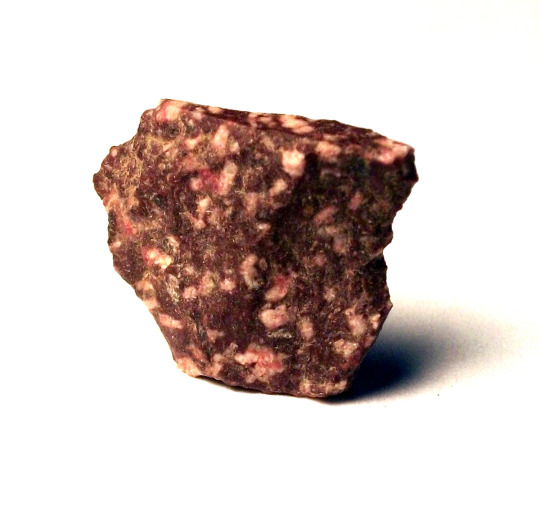
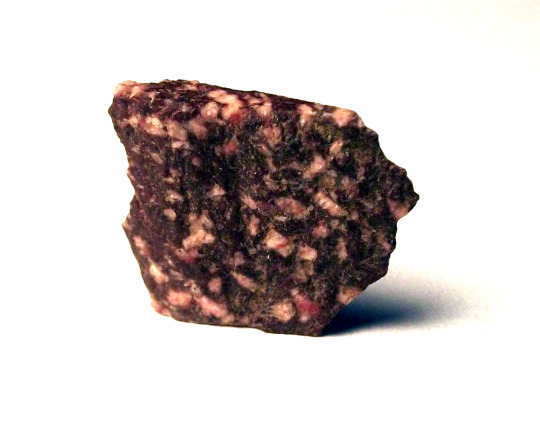
Egyptian Porphyry aka Imperial Porphyry (two views) - this 3/4" (2cm) chip was found on the walk from the parking lot up to the ruins of Hadrian's Villa in 1998.
In Imperial Roman times this stone was considered as the inherent personal property of the Emperor throughout the realm.
It comes from only one source; a single mountain in Egypt that the Romans called Mons Porphyry. It is a purple, volcanic stone, very dense and fine-grained, with small white inclusions.
According to Pliny’s Natural History, Imperial Porphyry was discovered in 14 (or 18?) CE by Caius Cominius Leugas, a Roman legionary. Seeing that this hard stone was the purple color which symbolized Imperial power, he had samples brought to the Emperor Tiberius in Rome. When Tiberius saw that this royal-colored stone was solid enough for building and carving, he decreed that “Imperial Porphyry” would be for the use of the Imperial family only.
This use to convey royalty made Imperial Porphyry truly the stone of Empire, causing it to be more significant and powerful to the Empire than gold.
The Byzantine Emperors used Imperial Porphyry to tile the interiors of some palace rooms, including the room where pregnant empresses gave birth. Young princes were given the title porphyrygenitos to indicate they were legitimate imperial heirs, born and raised in rooms of porphyry.
Constantine XI, the last of the Byzantine emperors, was crowned not in Constantinople, but in the provincial city of Mystras, which had a single Imperial Porphyry tile set into the floor. The new Emperor was said to have stood on that tile to be sworn in in 1449, continuing and ending the tradition that had been part of the Empire for more than 1,400 years.
Centuries later, Napoleon Bonaparte wanted to be buried in an Imperial Porphyry tomb, as a symbol that he was a legitimate heir to the Roman Emperors. He had officials search for the long-lost Imperial quarry during his expedition to Egypt, but was unable to find the ancient source. He was instead buried in a sarcophagus of much more common red porphyry.
The ancient quarry on Mons Porphyry was rediscovered by Sir John Wilkinson, a former president of the Royal Geographic Society in 1823, only two years after Napoleon’s death. The site - now called Jabal Abu Dukhkhan - is a World Heritage site. It is about 30 miles inland from the city of Hurghada on the southwestern shores of the Gulf of Suez by the Red Sea.

For $19 you can purchase some porphyry chips for yourself. Or maybe something bigger:
Imperial Porphyry slab - 10½" wide x 5½" high x ½" thick - $4,500 plus shipping

www.imperialporphyry.com
7 notes
·
View notes
Text
IL Monte Galala Ain ElSokhna
#View iCity#company Mountain View#Compound Mountain View iCity New Cairo Fifth Settlement#Compounds In New Cairo#iCity New Cairo#icity newcairo 2022#Mountain View#Mountain View Egypt#Mountain View for Real Estate#Mountain View i city New Cairo#Mountain View iCity#Mountain view iCity in New Cairo City#Mountain View icity Location#Mountain view iCity New Cairo#Mountain View iCity New Cairo brochure#Mountain View iCity New Cairo Fifth Settlement#Mountain View iCity New Cairo location#mountain view icity new cairo master plan#Mountain View iCity New Cairo pdf#mountain view icity newcairo#mountain view icity newcairo 2022#Mountain View Park Island iCity New Cairo#MV iCity New Cairo#MV Park phase#Palm Hills New Cairo prices#Properties for sale in New Cairo#the cheapest Apartments for sale in New Cairo#Twin house for sale in New Cairo#—
0 notes
Text

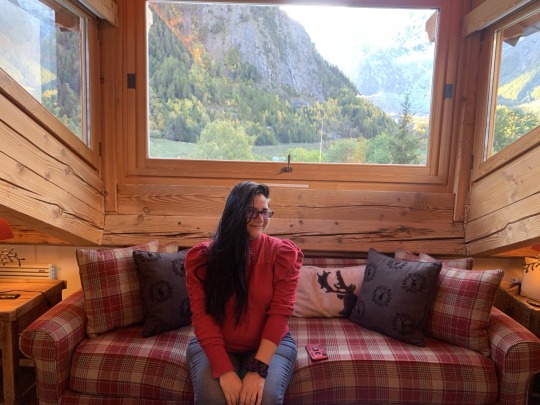
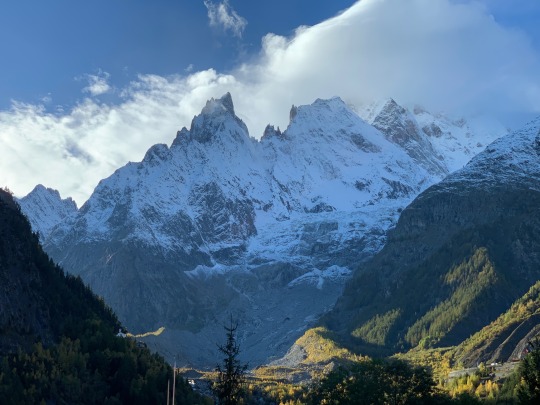
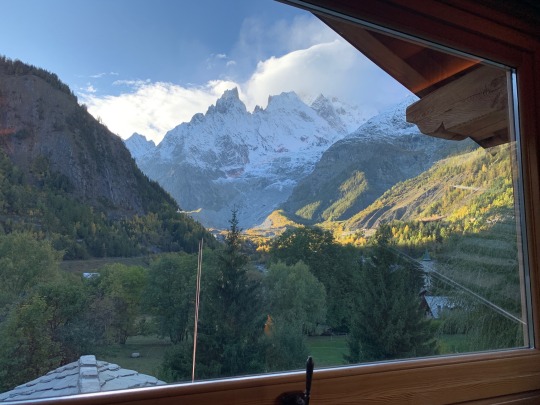
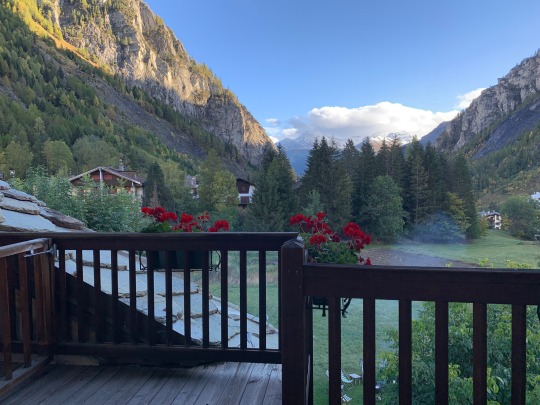
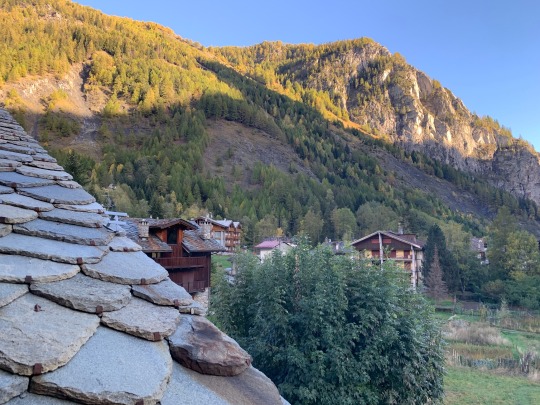
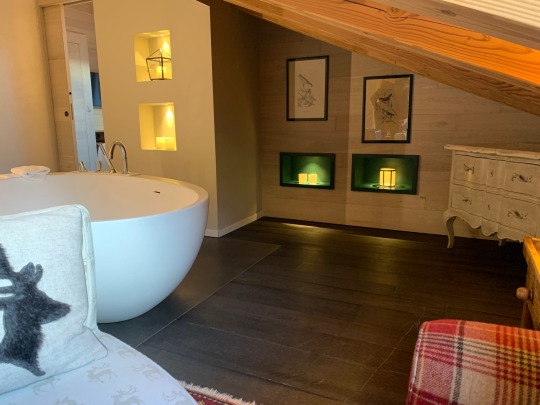
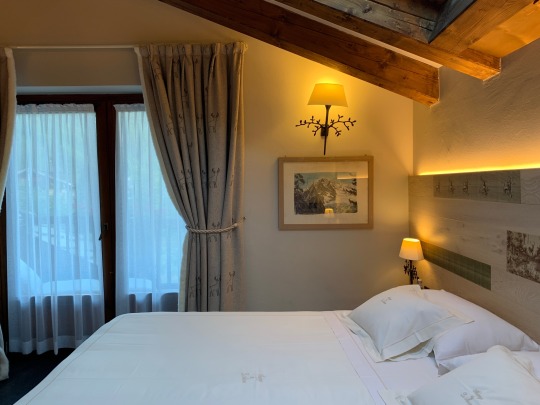

This year we had planned an extensive journey through Egypt to see the ancient sights along the Nile. When fighting broke out in Gaza, we decided to cancel the trip on the advice of friends who live in Cairo. That was 17 days ago. Since then, the situation in the area has worsened.
That gave us less than two weeks to pívot if we wanted a vacation. My first instinct was Italy, but we wanted to see a region we hadn’t experienced before. Enter Piedmonte in the North. Fall weather, food festivals, and a sleepy slow food and wine tour seemed ideal.
Well, here we are in our first stop—a luxurious mountain chalet at the foot of Monte Bianco. This was a long drive from Milan, but so worth it. Just look at the pyramids nature has created! We arrived on a picture perfect day and we’re treated to one of the best views of our lives. I kind of don’t want to leave the hotel!
We are staying at Auberge de la Maison, some 300 meters away from Skyway Monte Bianco.
Stunning!
So glad we’re here!
I’ll post more soon.
#travels#italy#italy 2023#italytravel#italygram#northern italy#piedmont#Monte bianco#mountains#mountain view#my view#Courmayeur#flowers#Piedmonte#vacation#just relax
16 notes
·
View notes
Text
this is so interesting
"At the same time the Persians also employed an entirely different system of irrigation, especially in the dry internally draining basins of the Iranian Plateau. This latter system involved the use of long underground channels or qanats. A qanat consists of a gently sloping tunnel that starts at the bottom where water is needed and extends back towards higher ground where the tunnel taps into water-bearing strata. Water is then conducted by gravity flow, where it seeps into the upper end of the tunnel, to an outlet and an irrigation canal at the lower end. Viewed from the air, the most distinctive feature of a qanat is the alignment of its ventilation shafts, each of which is surrounded by earth that was removed in the course of its construction and maintenance; with this system fresh cool mountain water could be brought straight to a settlement, garden or field. In addition, such long underground channels reduced the loss of precious water through evaporation. The Achaemenid Persians are thought to have introduced the qanat into the western and southern oases of Egypt (under Darius c.490 BC) where its employment substantially enlarged the areas that could be cultivated."
(gardens and gardeners of the ancient world, linda farrar)
youtube
15 notes
·
View notes
Text
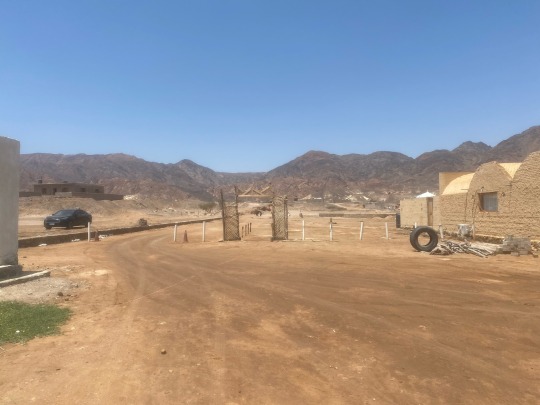
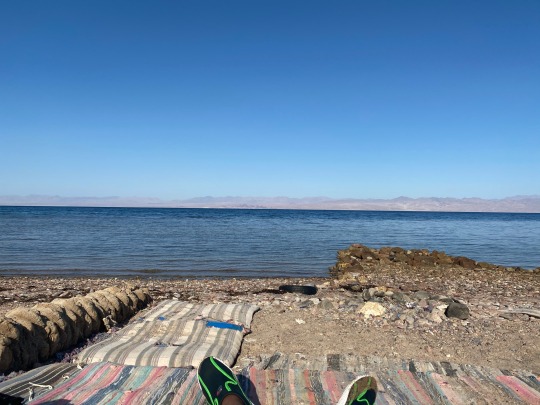

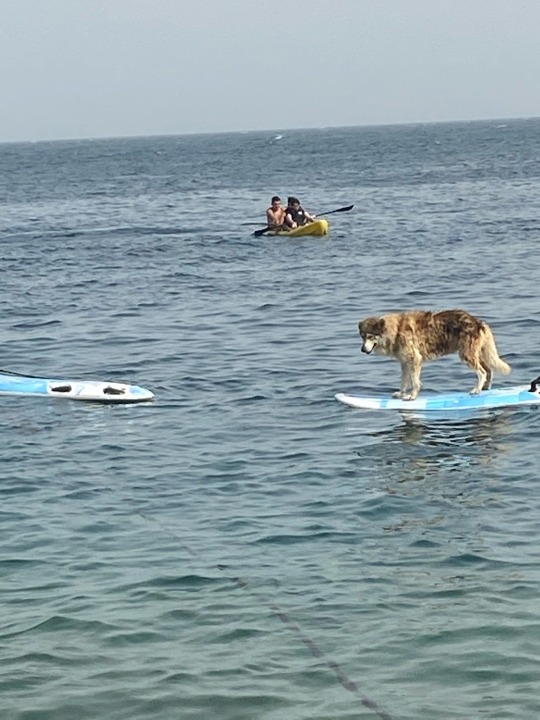





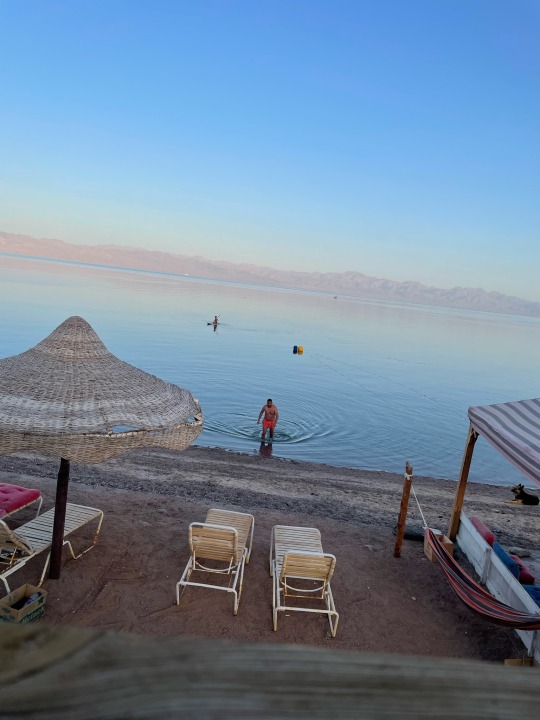
The best spot to snorkelling and diving, u will see the beautiful cities here at Sinai, Newibaa, Dahab, nature, sea, sky and the aquamarine life, wormth, sunshine and sunset the best view to relax and getting fresh, Mousa Mountain, El toor mountain, colourful mountains, Arabian nights, camping, diving and parachuting , enjoy your vacation, enjoy your life, privacy, humanity, here in Egypt you will find your inner peace 🌹❤️ come to Egypt
#egypteveryday#mount sinai#sinai peninsula#dahabegypt#safaga#sharmelsheikh#hurghada#egyptphotography#aph egypt#egyptology#winter
32 notes
·
View notes
Text
Top 20 Most Beautiful Cities In Africa | Travel Tips
Certainly! Africa is a continent known for its diverse landscapes, rich cultures, and vibrant cities.
You may choose to watch Top 10 Most Beautiful Cities In Africa | Best Places
youtube
Here's a list of 20 of the most beautiful cities in Africa, each offering its own unique charm and appeal:
Cape Town, South Africa: Nestled between the iconic Table Mountain and the Atlantic Ocean, Cape Town boasts stunning natural scenery, vibrant neighborhoods, and a rich cultural heritage.
Marrakech, Morocco: Marrakech mesmerizes visitors with its bustling souks, intricate architecture, and the vibrant colors of the Jardin Majorelle.
Nairobi, Kenya: As the gateway to East Africa, Nairobi blends modernity with wildlife conservation, offering attractions like Nairobi National Park and the Karen Blixen Museum.
Fes, Morocco: Fes is a UNESCO World Heritage Site renowned for its medieval medina, elaborate mosques, and labyrinthine alleyways.
Cairo, Egypt: Cairo is a bustling metropolis steeped in history, home to ancient wonders like the Pyramids of Giza and the Sphinx, as well as vibrant markets and lively streets.
Zanzibar City, Tanzania: The old Stone Town of Zanzibar City is a UNESCO World Heritage Site, featuring ornate doors, winding alleys, and beautiful beaches.
Luanda, Angola: Luanda is a coastal city with a mix of Portuguese colonial architecture and modern skyscrapers, offering stunning seaside views and a vibrant nightlife.
Johannesburg, South Africa: Johannesburg is a dynamic city known for its cultural diversity, thriving arts scene, and historical sites like the Apartheid Museum.
Dakar, Senegal: Dakar is a lively coastal city with colorful markets, vibrant music scene, and stunning beaches like Yoff Beach and N'Gor Beach.
Cape Coast, Ghana: Cape Coast is known for its picturesque beaches, colonial architecture, and its historic role in the transatlantic slave trade, evidenced by landmarks like Cape Coast Castle.
Asmara, Eritrea: Asmara boasts a unique blend of Italian colonial architecture, modernist buildings, and palm-lined boulevards, earning it recognition as a UNESCO World Heritage Site.
Windhoek, Namibia: Windhoek is a city surrounded by breathtaking landscapes, offering visitors a blend of German colonial architecture, lively markets, and nearby safari adventures.
Kigali, Rwanda: Kigali is a clean and green city known for its orderly streets, cultural attractions like the Kigali Genocide Memorial, and stunning views of the surrounding hills.
Accra, Ghana: Accra is a vibrant capital city with lively markets, beautiful beaches, and historical landmarks like Independence Arch and Jamestown.
Lagos, Nigeria: Lagos is a bustling megacity with a vibrant atmosphere, offering a mix of beaches, bustling markets, and a thriving arts and music scene.
Addis Ababa, Ethiopia: Addis Ababa is a city of contrasts, blending modern skyscrapers with traditional Ethiopian architecture, vibrant markets, and cultural attractions like the National Museum.
Maputo, Mozambique: Maputo is a coastal gem with a laid-back atmosphere, colonial-era architecture, vibrant markets, and stunning ocean views along its scenic waterfront.
Stone Town, Zanzibar: Stone Town is the historic heart of Zanzibar, known for its narrow streets, ornate doors, and rich Swahili culture, offering a glimpse into the island's past.
Gaborone, Botswana: Gaborone is a modern city surrounded by natural beauty, offering visitors botanical gardens, wildlife reserves, and a thriving arts and crafts scene.
Abuja, Nigeria: Abuja is Nigeria's modern capital city, known for its impressive architecture, lush greenery, and cultural landmarks like the Nigerian National Mosque and Aso Rock.
Read more
Top 15 Best Places To Visit Tokyo Japan | Tourists Attraction
Top 10 Best Places To Live In UK [ United Kingdom] 2024
Top 10 Best Places To Live In Canada 2024 | Best Cities
Top 10 Best Places to Live in America [ USA Cities ] 2024
How To Make Money : Top 10 Niches To Monetize YouTube
Hillbrow Johannesburg The Vibrant Area Of South Africa
Dubai Downtown Walking Tour 2023 | Burj Khalifa UAE
Dubai Beach: Walking Around | The Best Tour 2023
Ethiopian Airlines Flying Queue At Addis Ababa Airport
2 notes
·
View notes